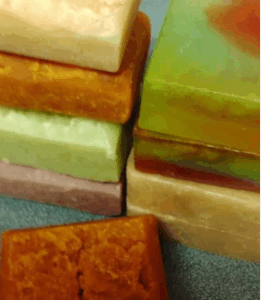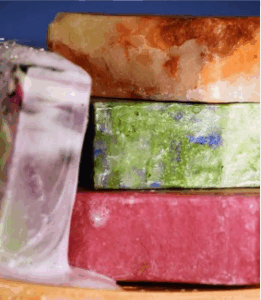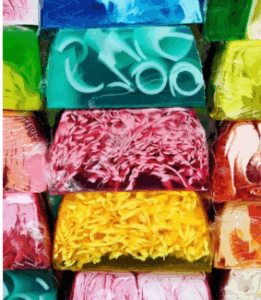Free Shipping for all Order of $99
Three Common Ways to Make Soap
E-Pharmacy
Order medicines and health products online and get it delivered at home from licensed pharmacies
Online Consultations
Consult qualified and registered doctors on chat for free
Labs Tests
Book lab tests online for hassle-free, home sample collection service. Get reports online.
Authentic Information
Read medicine and health content written by qualified doctors and health professionals
Our Story

Hot Process Method
The hot process method is the traditional, or old-fashioned way to make soap. In this method, the base oils and an alkaline – typically sodium hydroxide – are mixed together while still quite warm, or even hot. The mixture is stirred until the oils and salt reach full emulsification, known as “trace.” From that point, the raw soap batter is cooked in a double boiler until saponification occurs. Saponification is the chemical process that turns the oils/salt mixture into soap.
Cooking the soap batter vastly speeds up saponification. Once the batter is done, fragrances, botanicals, or colors may be added before the soap is poured into a mold. Hot process soap is ready to use after it cools and is cut, though a cure time of at least two weeks is ideal to let excess water evaporate from the individual bars.
So we decided to create a platform that stood for transparent, authentic and accessible information for all.
This idea grew into a company and Medilazar was created in 2015.

Cold Process Method
Cold process soap making is the new, or “modern” approach to soap making. It’s known as cold process because under this method, saponification takes place without the use of additional heat. Once the raw materials are emulsified and come to trace, saponification takes place “cold” after the batter is poured into a mold. Without the help of outside heat, cold process soaps require 4-6 weeks for the soap batter to completely saponify and excess water to evaporate.

Melt and Pour
As the name implies, melt and pour soap making is done by melting ready-made glycerin soap bases and then adding colors, fragrances, or botanicals before pouring this liquefied soap into molds to harden and cure. Many people like to work with melt and pour soap bases because the ingredients have already saponified, and there is no need to mix the base oils with sodium hydroxide.
Melt and pour soap projects are a great way to engage children as long as an adult provides active supervision. All soap making is art as well as science, but with melt and pour soap making the emphasis is on the art since the “science” – saponification – happened long before the soap maker decides what color or fragrance or other additive to use.
Luscious Lathers uses all of these methods to make soap, but most of our soaps are hot process. We love hot process soaps because they can be used right away, and we love the rustic look and feel of the finished bars.
Meet Our Free Medilazar
Retail Manager
How we bring you closer to better health
Over the past three years, we've worked to build a healthcare platform that not only delivers medicine – but a platform that guides customers to the right and affordable care. Today, Medilazar is present in 1000+ cities– And we’re just getting started.Honors and awards
Winner
Wellness Awards
Top 3
Wellness Awards
Winner
Best New Product
Top 35
Innovative Awards







